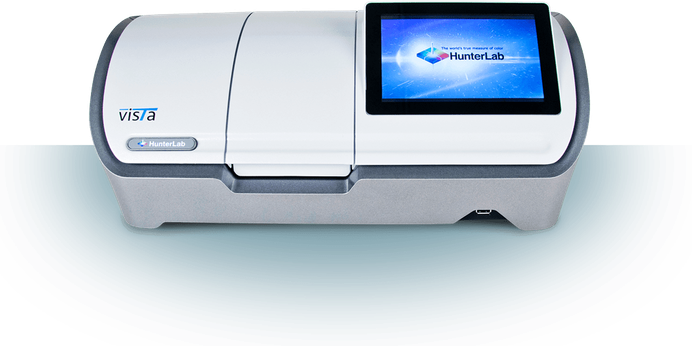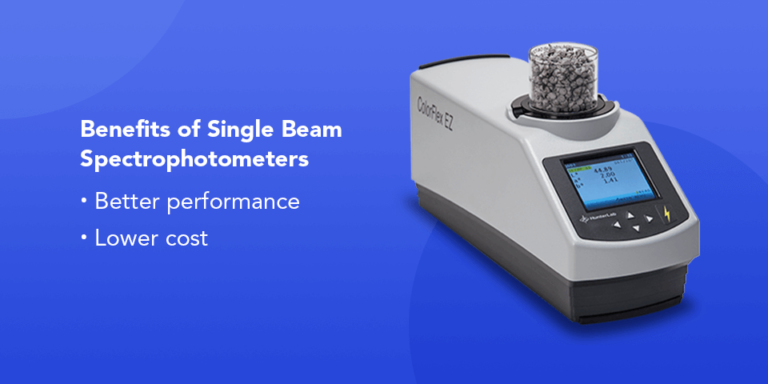
Spectrophotometers measure light’s wavelength distribution by providing the percentage of reflectance from an object, detecting the color of the sample. There are two types of beam spectrophotometers — single beam spectrophotometers and double beam spectrophotometers. These instruments have several key differences you should keep in mind when deciding which is best for your laboratory.
Single Beam Spectrophotometer
Single beam spectrophotometers determine color by measuring the intensity of the light sources before versus after a test sample is inserted. This light source is modulated (turned on and off) to differentiate the light coming from the light source versus the light coming from the flame.
The single light beam passes through the sample, and the single beam spectrophotometer measures the intensity of the light reflected from the reference to measure the sample.
Double Beam Spectrophotometer
Double beam spectrophotometers measure color in a sample by using two, or “double,” beams. One beam passes through the sample side, and the other beam passes through the reference side, so the reference and the sample can be read simultaneously with no need to recalibrate the instrument.




